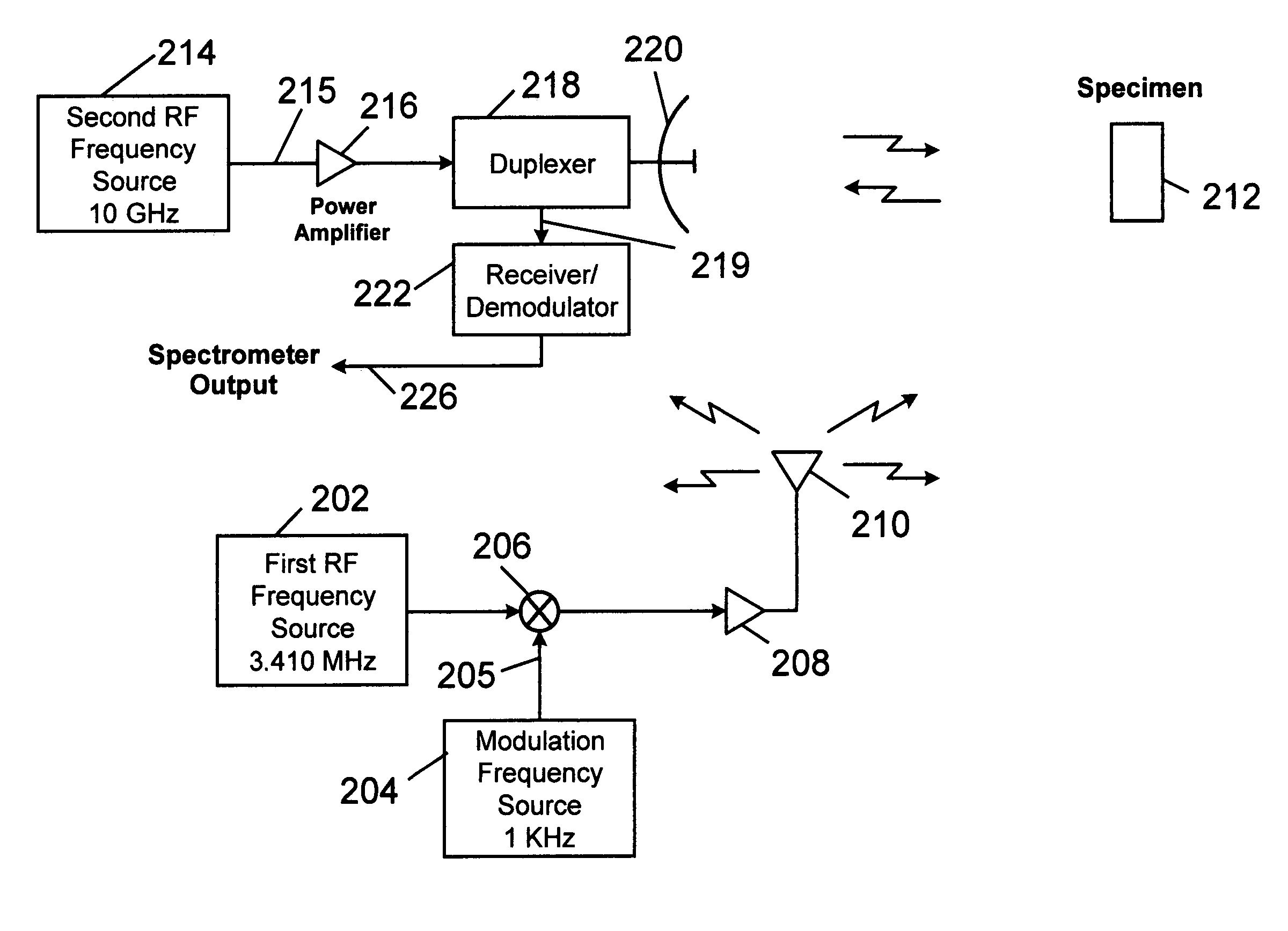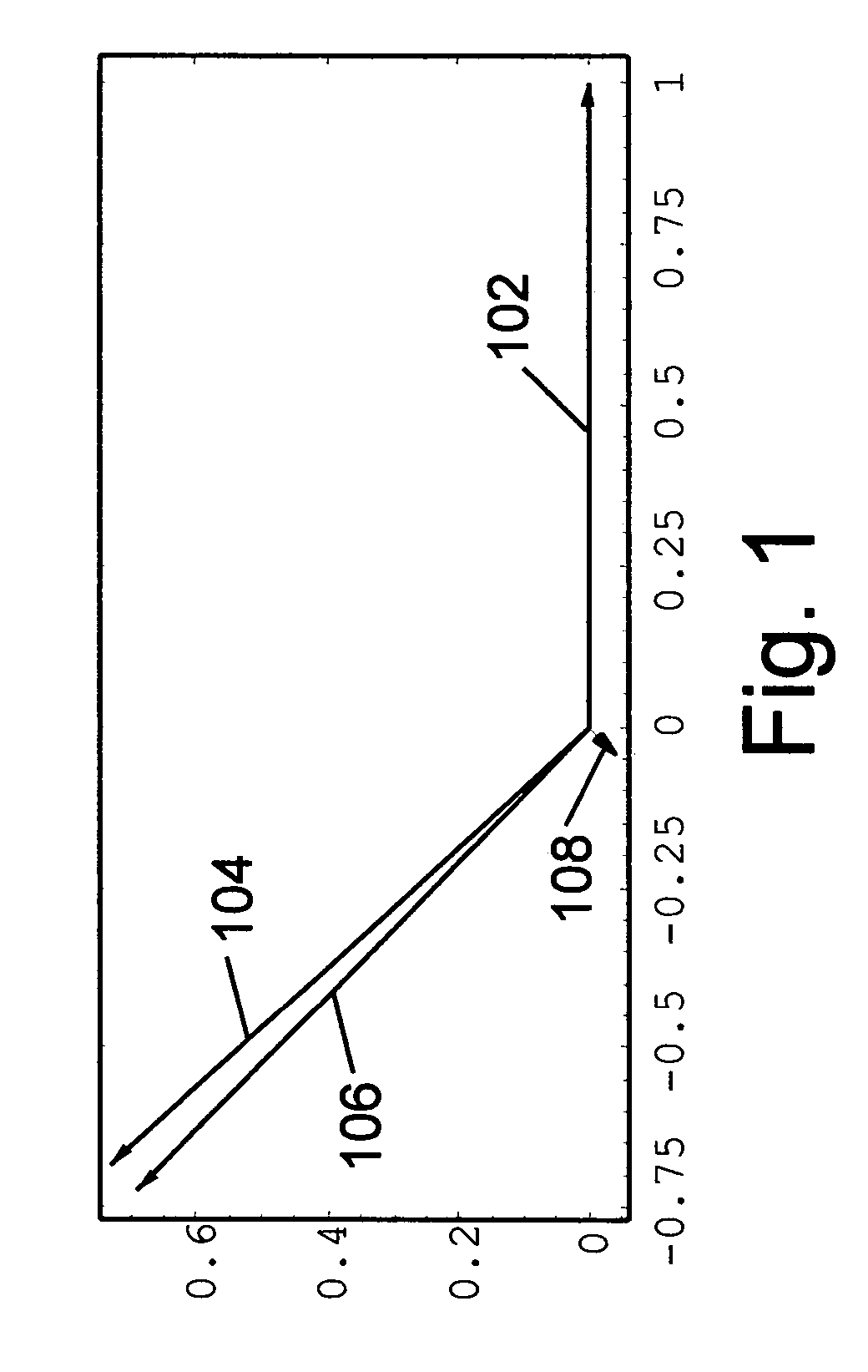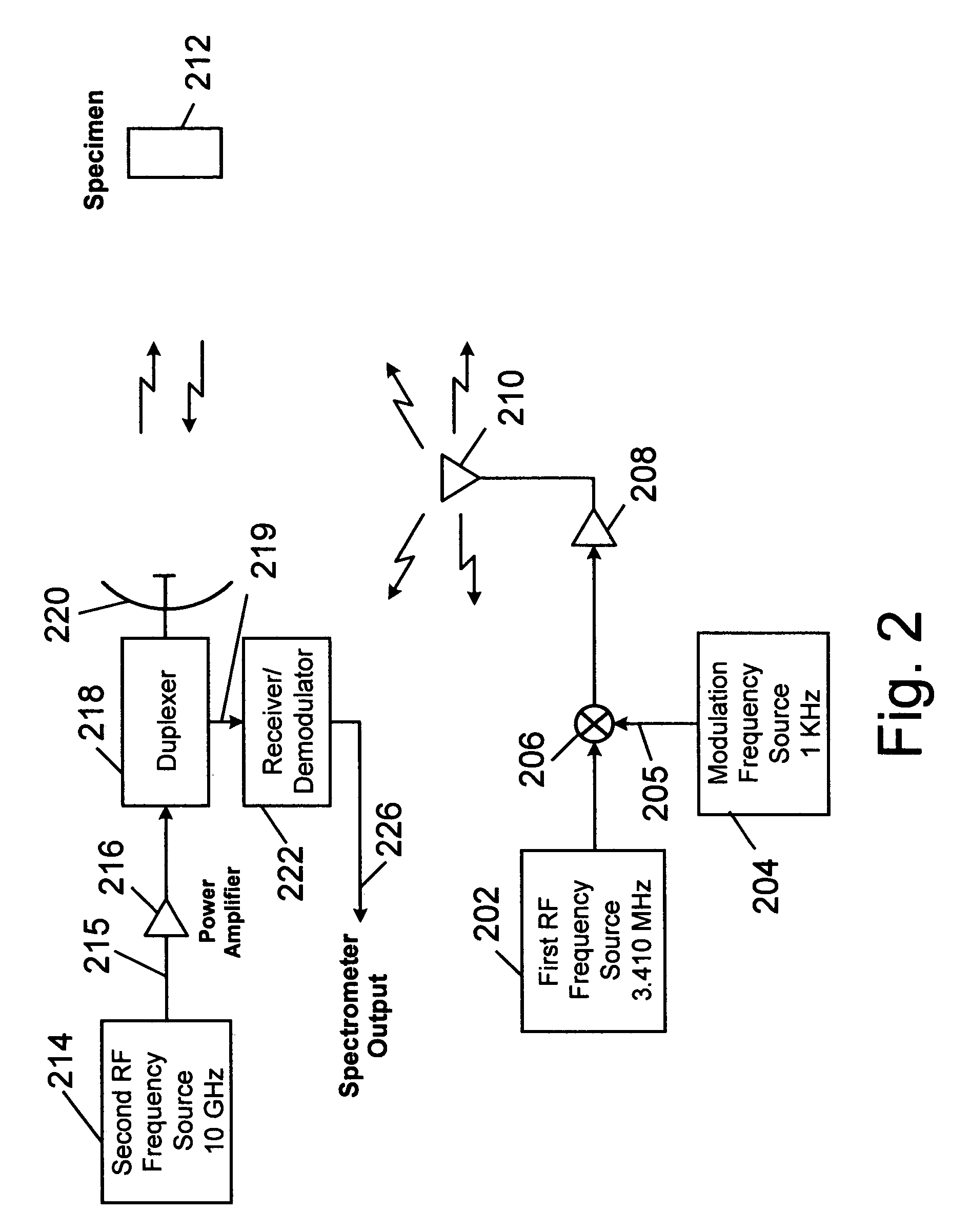Parametric nuclear quadrupole resonance spectroscopy system and method
a quadrupole resonance spectroscopy and parametric technology, applied in magnetic measurements, instruments, measurement devices, etc., can solve the problems of narrow line width absorption lines, narrow series of closely spaced lines, and limit its usefulness to very short range applications
- Summary
- Abstract
- Description
- Claims
- Application Information
AI Technical Summary
Benefits of technology
Problems solved by technology
Method used
Image
Examples
Embodiment Construction
[0029]The present invention discloses a method that overcomes many of the shortcomings of the conventional methods of Nuclear Quadrupole Resonance (NQR) spectroscopy. The invention uses two separate signals, the first signal at one of the resonant frequencies of the specimen and the second signal at a frequency that responds to changes in either the specimen's dielectric constant, magnetic permeability or other related property, which are induced by the first signal. Since the principle of operation is based on a parametric modulation or variation, the process of the present invention may be termed Parametric Nuclear Quadrupole Resonance (PNQR) spectroscopy.
[0030]The basic principle of PNQR spectroscopy is the detection and measurement of the interaction between the quadrupole electric field of an atom's nucleus and its own valence electrons. This interaction is maximized when an exciting radio frequency field's frequency is equal to a resonance of this interaction in a given atom. ...
PUM
 Login to View More
Login to View More Abstract
Description
Claims
Application Information
 Login to View More
Login to View More - R&D
- Intellectual Property
- Life Sciences
- Materials
- Tech Scout
- Unparalleled Data Quality
- Higher Quality Content
- 60% Fewer Hallucinations
Browse by: Latest US Patents, China's latest patents, Technical Efficacy Thesaurus, Application Domain, Technology Topic, Popular Technical Reports.
© 2025 PatSnap. All rights reserved.Legal|Privacy policy|Modern Slavery Act Transparency Statement|Sitemap|About US| Contact US: help@patsnap.com



